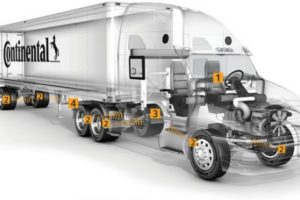Roadside inspections are a critical part of keeping our roads safe, but that doesn’t mean they have to be unpleasant or time-consuming. Preparation via regular maintenance and pre- and post-trip inspections is the best friend of fleet drivers when the inevitable roadside check rolls around.
When the driver knows what to expect, and the vehicle is properly maintained, these inspections can be a breeze. Here are four key rules that will keep you on the road.
Appearances Matter
Troopers and other inspectors may not judge a book by its cover, but they will judge a truck by its appearance. A quick visual scan reveals much about the state of a vehicle, and often enough information is provided in that scan that determines whether or not the entire truck gets the full inspection treatment.
If the truck’s external appearance looks clean, the cab is clear, everything seems to be in good working order, an inspector’s frequent natural assumption is that a driver responsible enough to look after his vehicle is responsibly maintaining it, as well.
Before departure, drivers should make sure their lights are working, their tires aren’t damaged and their cargo is secured. Look for anything that might raise even a small red flag and address it prior to embarking on the trip.
Be Aware of Common Pitfalls
There are five common levels of inspection and five common violations that can take a vehicle off the road. Knowing what each list entails can save a driver and fleet manager money and time, without having to deal with repairs and lost miles.
The five levels of inspection are:
- Level One is the most common and comprehensive inspection. This includes a thorough vehicle and paperwork review. Only a Level One inspection will provide the driver with an inspection sticker.
- Level Two inspections are similar to Level One but do not require the inspector to get under the vehicle.
- Level Three is an in-depth inspection of paperwork.
- Level Four is the inspection of a particular feature, like brakes.
- Level Five is an inspection that takes place at the carrier.
The five most common violation areas are:
- Brakes out of adjustment
- Other brake problems
- Lights
- Tires and Wheels
- Cargo Load Securement
Drivers should conduct their own inspection for every level at appropriate intervals, and make certain that every inspection item within each level will pass close examination. This is particularly true regarding the five most common violations. Because they are common, the inspectors will absolutely check for those, so do inspections for those specific items, as well. Using an Electronic Verified Inspection Reporting system that electronically collects and verifies inspection, compliance and maintenance data provides the most efficient inspection.
Note: CMVs transporting radioactive materials have an additional level of inspection. Learn more at CVSA.
Remember Your Paperwork
Going digital saves time and paperwork but physical paperwork will never entirely go away. Keep a checklist of paperwork needed on the road, print out hard copies in case an electronic device with the documentation fails, and stay on top of expiration dates by scheduling renewals in advance.
Required documentation includes:
- Log book (For those who are still dragging their feet in getting an ELD-ready device)
- Commercial Driver’s License
- Medical Certificate (including waivers)
- Proof of periodic inspection documentation
- All load-related paperwork including Bill of Lading, Emergency Response Information (For Hazmat shipments)
Be Professional
Troopers and inspectors are just doing their job when they conduct a roadside inspection. Their goal is to make sure everyone on the road stays safe. Acting in a defensive or combative manner can prolong the inspection and lead to schedule interruptions and fines. If a conflict arises with an inspector, stay calm and contact a supervisor to avoid emotionally escalating an issue.
These four rules for roadside inspections will save money. $200 million is annually lost revenue due to violations found during roadside inspections. Also, with an increase of fines this year, it’s imperative to stay on top of all the elements that can lead to violations, unnecessary downtime and small issues that can lead to potentially massive repairs.







